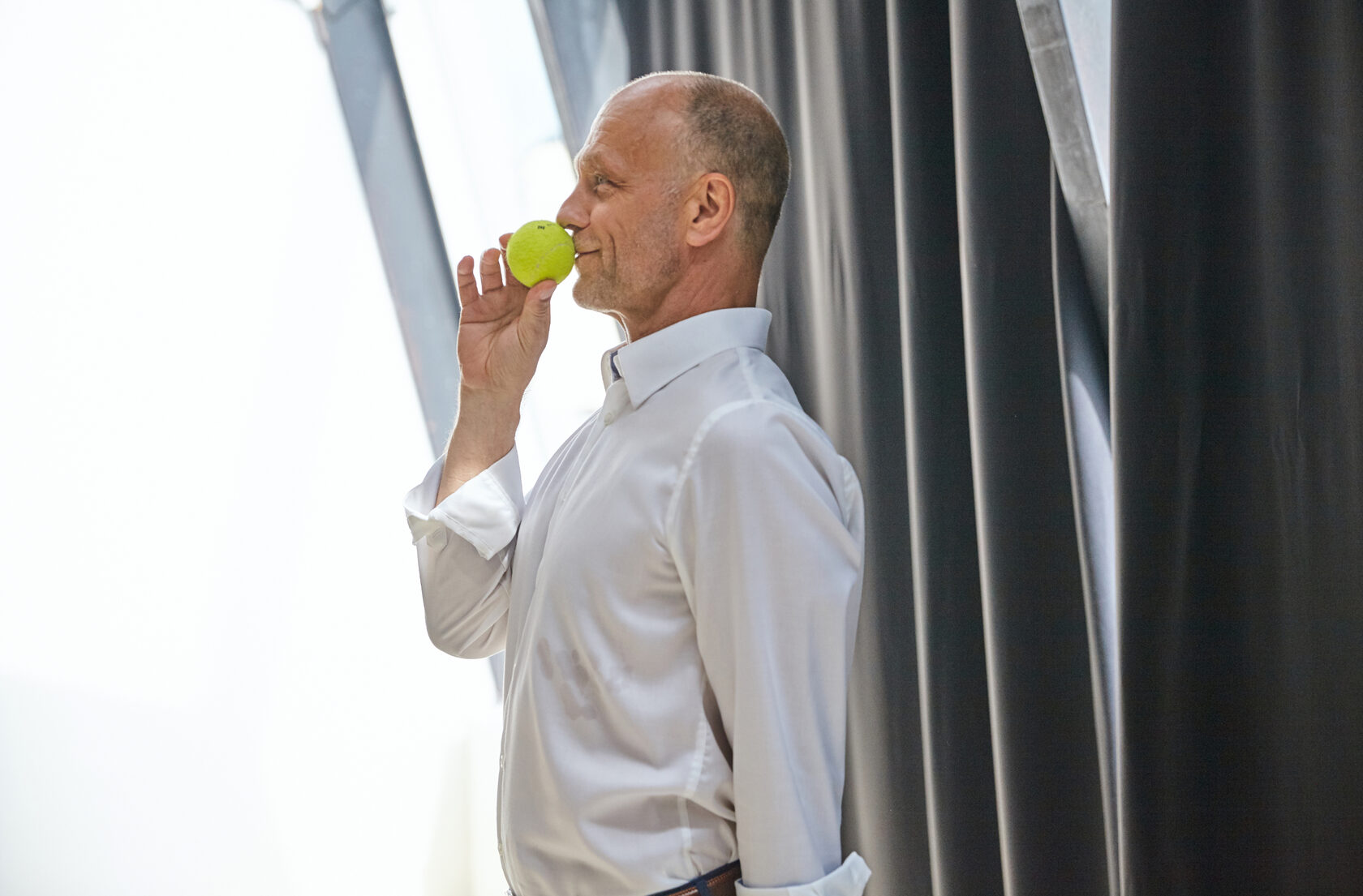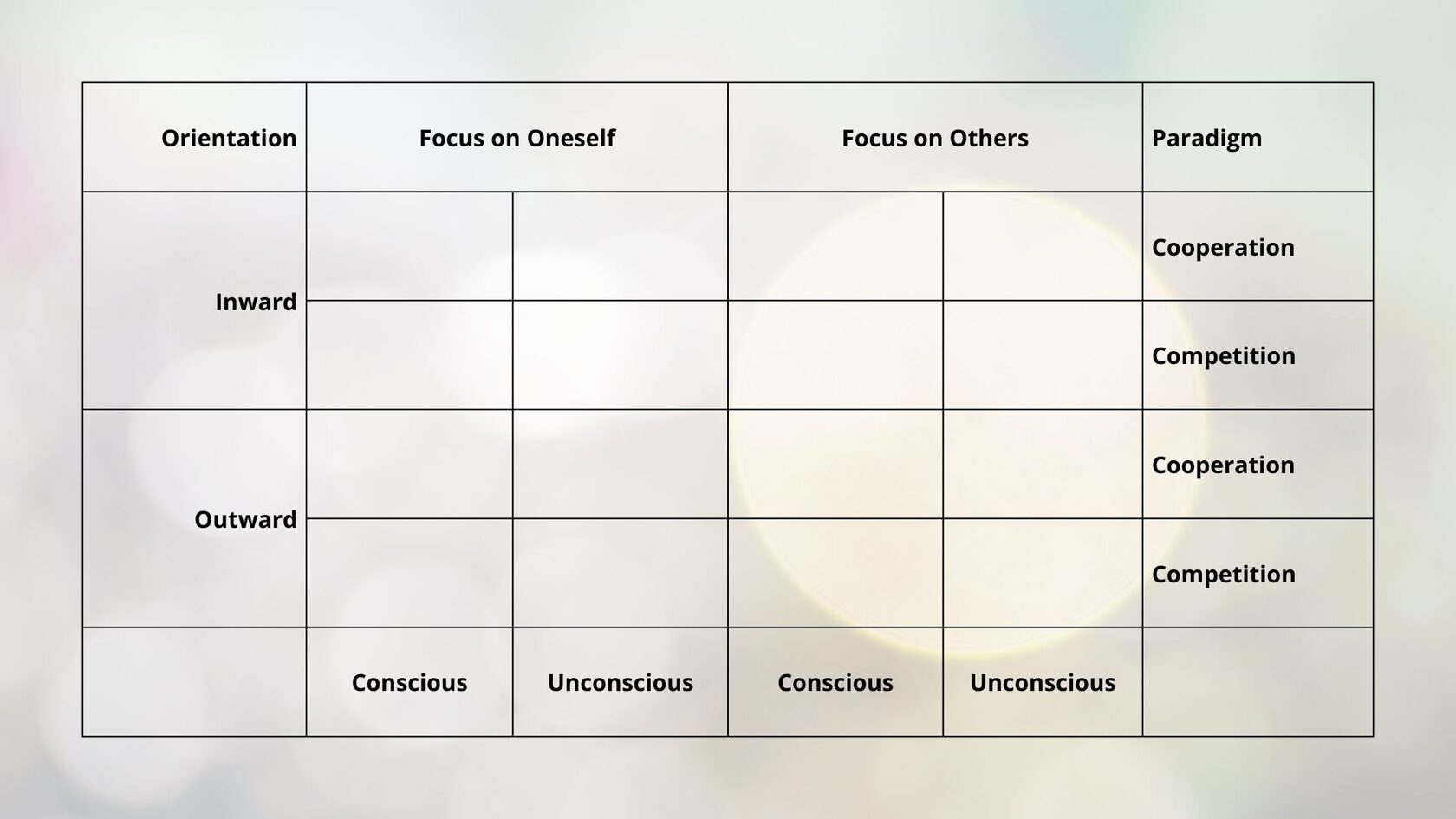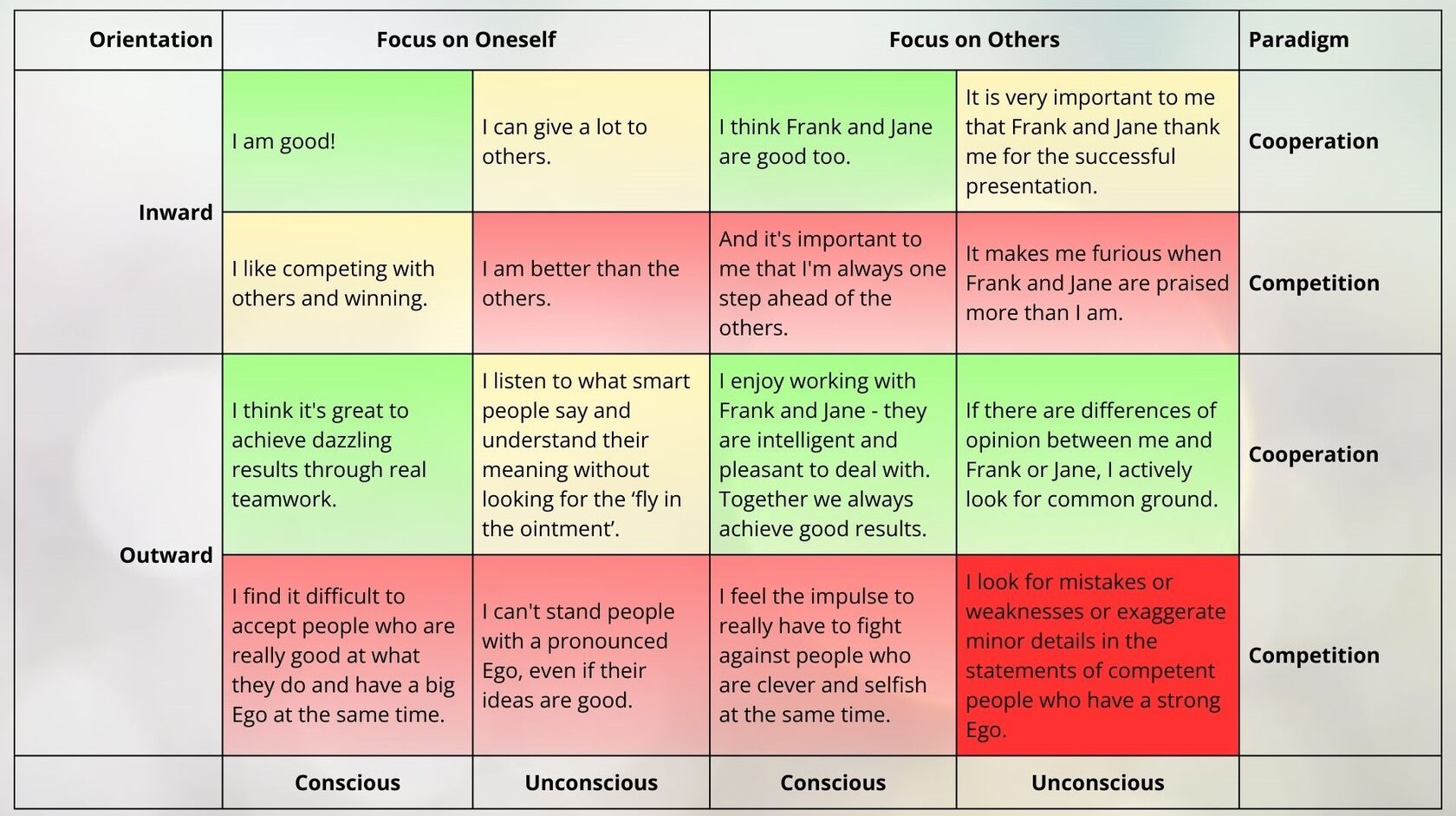Behavior is a complex part of human existence that can be viewed and understood from various perspectives. Through behavior, we shape our interaction with our environment, other people, and ourselves. Behavior occurs on verbal, physical, and emotional levels.

In this article, we focus on analyzing behavior based on four criteria:
- Orientation of behavior – inward or outward.
- Focus of behavior – on oneself or others.
- Type of behavior – conscious or unconscious.
- Paradigm – cooperation or competition.
1. Orientation of Behavior
Behavior can be directed towards the external world or inward.
- Inward behavior includes sensations, emotions, thoughts, self-talk, values, and instincts.
- Outward behavior involves verbal elements (words and sentences), nonverbal elements (facial expressions, gestures, posture), and physiological reactions (e.g., blushing).
Put simply, outward behaviour is visible to the environment, while inward behaviour is only visible to oneself.
2. Focus of Behavior
- A focus on others means that thoughts, ideas, questions or instructions are directed toward other people.
- A focus on oneself means one leads an inner monologue, motivates, criticises or feels sorry for oneself.
3. Type of Behavior
Behavior can be either conscious or unconscious.
- Conscious behavior is deliberate, intentional and guided by an individual’s goals, beliefs, and values. It can even suppress instinctive reaction patterns.
- Unconscious or impulsive behavior runs automatically, as if on autopilot. It is not controlled or directed by the conscious mind and is often influenced by irrational beliefs or instincts.
4. Behavioral Paradigm
Here, we differentiate between two paradigms: cooperation and competition.
- Cooperative behavior is driven by the desire to find common ground with others and work with them to achieve a shared goal that benefits everyone.
- Competitive behavior is driven by the desire to prioritise one’s own advantage or goals, even if this is at the expense of others.
I suggest characterizing your behavior using a table based on the four criteria discussed above.
Self-Analysis Table

In practice, you start with your outward behavior (focus on others) as it is visible and easier to analyze. From there, you can move on to your inward behavior (feelings, evaluations, beliefs, values).
A completed table narrows down the search field and helps prioritize which aspects of your behavior you want to work on in the near future.
With such an approach, you can learn up to 6 new behaviors in the course of a year. This will have a noticeable impact on different areas of your life. For more information, please read the article: How We Develop When We Change Our Behavior: 3 Key Aspects.
Example of a Completed Self-Analysis Table

Marking Progress
- Green: Behaviors that are well-developed and reliable “resources” in any respect.
- Yellow: Behaviors that are effective but could be improved to give more outcome. For example, balancing your focus between yourself and others.
- Red: Behaviors that you would like to eliminate or minimize because they often interfere with your communication with other people.
How to Begin
Start working on yourself with just one or two behaviors! If you have chosen one behavior, is it a ‘bad’ one that you want to get rid of, or a weakly developed ‘good’ one that you want to strengthen? In the case of two behaviors, choose one ‘bad’ and one ‘good’!
As soon as the new ‘good’ behavior has become a ‘habit’, or you have got rid of the ‘bad’ habit, you can move on to the next one or two behaviors you are working on.
Next Steps
Think about how exactly you want to change this behavior or the two behaviors over the next 1-2 months. Realise what positive impact a successful change will have.
We mainly demonstrate our behaviors in communication with other people (but also with ourselves). It is therefore advisable to ask for feedback in order to better understand with which behavior we start our goal-oriented change. In this context, I recommend the article: Feedback: Why Is It Important to Give and Request It?
For faster results, you can book an initial consultation where we will develop a plan and choose the right format for working on your behavior change.